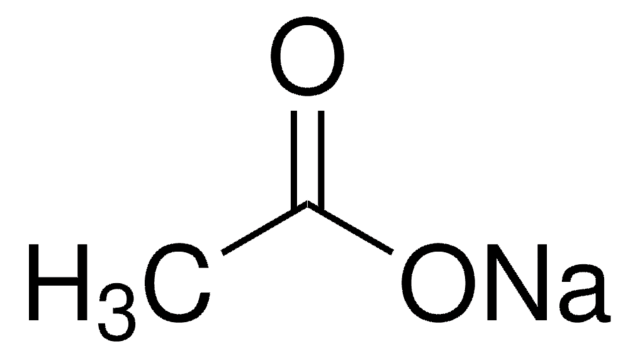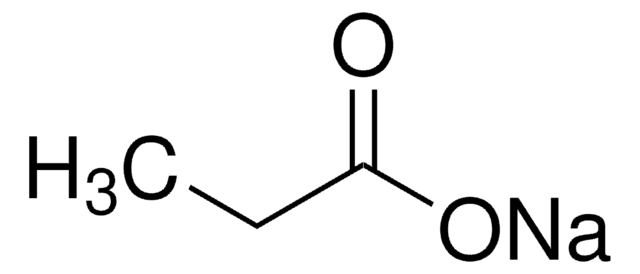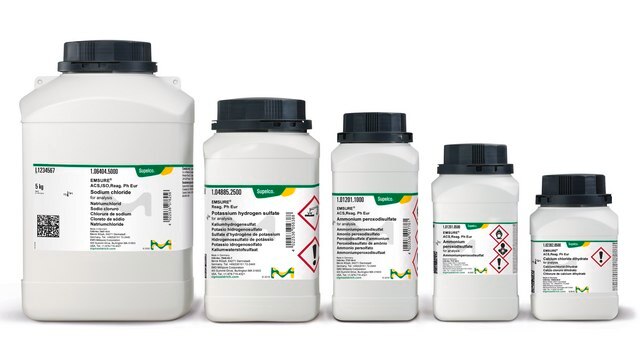S7545
Sodium acetate
BioXtra, ≥99.0%
Synonym(s):
Acetic acid sodium salt
About This Item
Recommended Products
product line
BioXtra
Quality Level
Assay
≥99.0%
form
solid
autoignition temp.
1112 °F
impurities
≤0.0005% Phosphorus (P)
<0.01% Insoluble matter
pH
8.5-9.9 (25 °C, 246 g/L)
pKa
4.76 (acetic acid)
mp
>300 °C (dec.) (lit.)
solubility
H2O: 1 M, clear, colorless
anion traces
chloride (Cl-): ≤0.002%
sulfate (SO42-): ≤0.003%
cation traces
Al: ≤0.0005%
Ca: ≤0.005%
Cu: ≤0.0005%
Fe: ≤0.0005%
K: ≤0.03%
Mg: ≤0.0005%
NH4+: ≤0.05%
Pb: ≤0.001%
Zn: ≤0.0005%
SMILES string
[Na+].CC([O-])=O
InChI
1S/C2H4O2.Na/c1-2(3)4;/h1H3,(H,3,4);/q;+1/p-1
InChI key
VMHLLURERBWHNL-UHFFFAOYSA-M
Looking for similar products? Visit Product Comparison Guide
Related Categories
General description
Application
- in the isolation of DNA from bacterial samples of the human gastrointestinal tract
- as a component of RNA elution buffer for the preparation of infrared (IR) fluorescent probes in northern blot technique
- in the lysis buffer for cellular lysis to detect reversible oxidation of protein tyrosine phosphatases (PTPs) with the cysteinyl-labeling assay using IMR90 fibroblasts
Storage Class Code
11 - Combustible Solids
WGK
WGK 1
Flash Point(F)
Not applicable
Flash Point(C)
Not applicable
Personal Protective Equipment
Choose from one of the most recent versions:
Certificates of Analysis (COA)
Sorry, we don't have COAs for this product available online at this time.
If you need assistance, please contact Customer Support.
Already Own This Product?
Find documentation for the products that you have recently purchased in the Document Library.
Customers Also Viewed
Our team of scientists has experience in all areas of research including Life Science, Material Science, Chemical Synthesis, Chromatography, Analytical and many others.
Contact Technical Service





